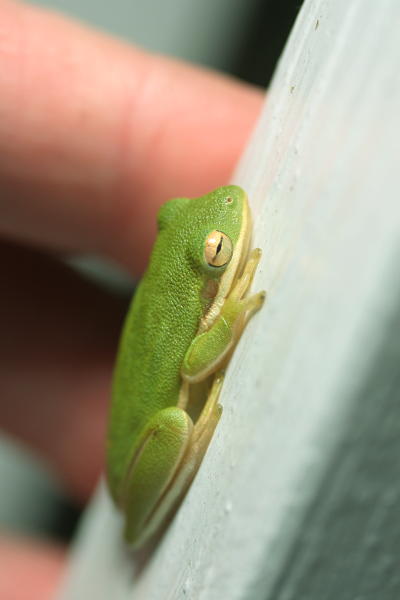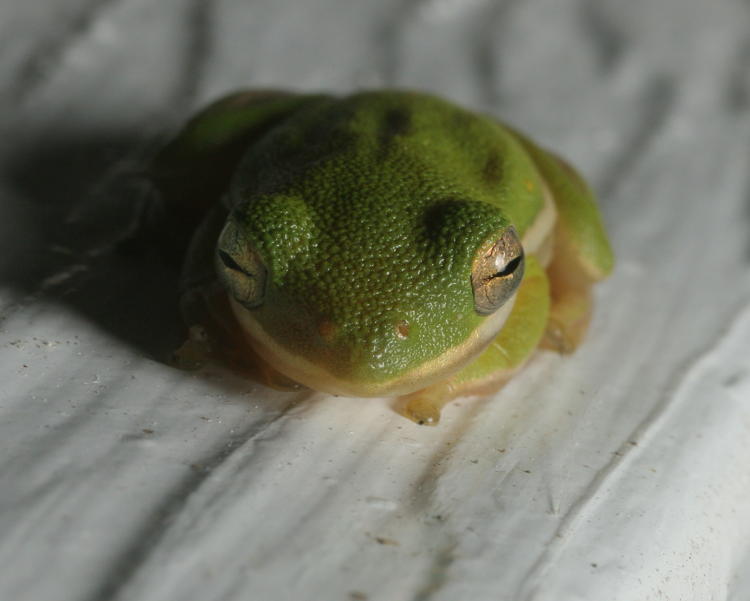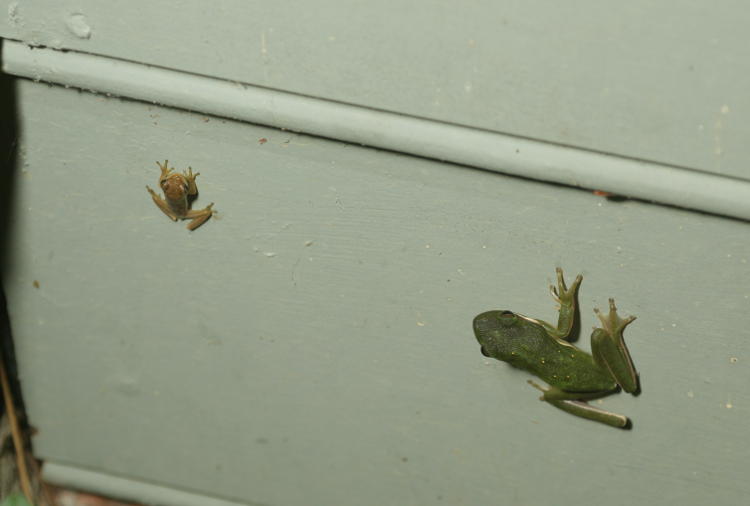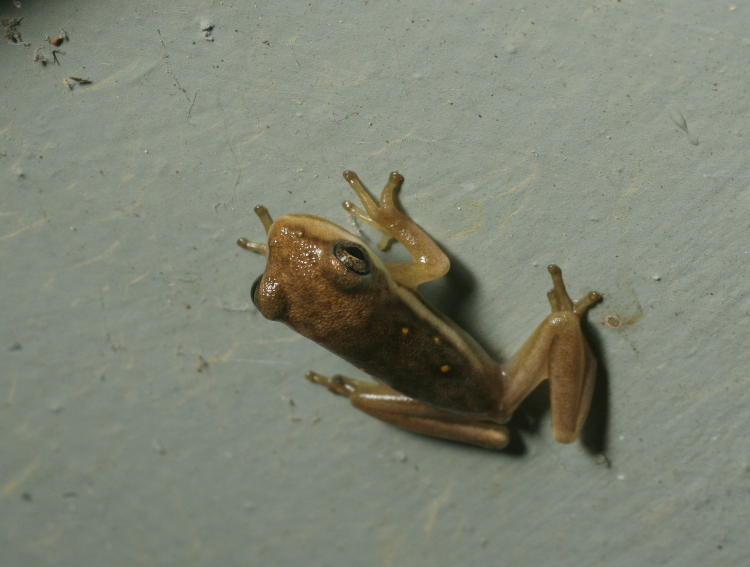For Halloween evening, we had almost ideal conditions: the temperature was warm enough to be out without a jacket, but there was a breeze that occasionally turned into a blustery wind that bullied the leaves around, as and the night wore on, the sky began flashing ominously and distant thunder could be heard. It was, as far as I was concerned, just the right kind of mood for trick-or-treating, but I suppose the parents thought the tornado warnings we were getting were, you know, “not the ideal nurturing environment for little woogums,” and so the visitors disappeared quickly. Which was a shame – we still had a lot more books to give out, but those that had come around before then were all pleased, and most were repeat visitors from last year. This is definitely an aspect of the holiday that I heartily recommend.
But as the rain finally rolled in (the thunder and lightning had pussied out,) we had friends stop by, and we were all up for a while with dinner and bullshitting. Then as they left and I was turning back to go inside the house again, I glanced down at our porch railing and found another little visitor.

 Yes, it’s another green treefrog (Hyla cinerea,) but I’m cool with that, because I was hoping to get them established in the area and it looks like it’s working. The combination of higher temperatures and rain seems to have brought this one out, possibly assisted by our porch light being on, which was certainly attracting its share of insects. I had to do a scale shot with the fingers of my left hand in the background, but because the aperture on the Mamiya 80mm macro lens is manually controlled with a spring-loaded lever operated by my left hand, this meant that I was shooting wide open at f4, so depth dropped a bit. Still, I think I effectively demonstrated that this is a juvenile, roughly half the length of an adult (I did not measure it, but I’m estimating it at about 25mm in body length.) It was pretty patient with me as I got a variety of angles, including going in for the portrait.
Yes, it’s another green treefrog (Hyla cinerea,) but I’m cool with that, because I was hoping to get them established in the area and it looks like it’s working. The combination of higher temperatures and rain seems to have brought this one out, possibly assisted by our porch light being on, which was certainly attracting its share of insects. I had to do a scale shot with the fingers of my left hand in the background, but because the aperture on the Mamiya 80mm macro lens is manually controlled with a spring-loaded lever operated by my left hand, this meant that I was shooting wide open at f4, so depth dropped a bit. Still, I think I effectively demonstrated that this is a juvenile, roughly half the length of an adult (I did not measure it, but I’m estimating it at about 25mm in body length.) It was pretty patient with me as I got a variety of angles, including going in for the portrait.

Now, I admit that this is shamelessly altered, exploiting the capabilities of digital manipulation to present this other than how it originally appeared, because I had to lean in from the top of the railing and the frog was upside-down in the original frame, but it looked much better rotated. Oh, wait – I could have done that with film, too, or even with, like, a woodcut. Scratch all that guilty talk.
[Actually, I dubbed out a pesky hair that was adhering to the frog’s leg too, so make of that what you will.]
And then, leaning over the railing, I found this wasn’t the only visitor, or even the only one within a meter.

A pair of the same species were clinging to the wall in that inimitable treefrog way, just off the railing itself, which actually joins the wall along that edge seem on the left side. The two of these were on either side of the first frog seen, size-wise, the larger one being about adult size, while the smaller one not terribly far from the tadpole stage. And I also like how I captured three different hues of skin tones all together here.
In fact, let’s go in for a closer look at the wittle ‘un.

I’m not sure I’ve ever seen one in quite this color before, though I admit that the newly-emerged tadpoles that I’ve caught a few times were pretty close. However, none of those had the telltale white side stripe of the green treefrog, nor those three Mr Burns spots on the back. This is the first indication I’ve had that those markings develop pretty quickly, but as yet I have not had the opportunity to observe the various stages of development sequentially; I find individuals at certain stages, and then days or weeks later find others at later stages, but can never be sure if I’m looking at the same ones, or even the same brood or species. I’ve made it a point not to retain captives for more than an hour or so for detail shots, while it is almost necessary to raise some from the egg stage to know that I’m seeing the same species each time. Maybe at some point I’ll set up a decent aquarium/terrarium, though I know maintaining that would be more effort and time than I can dependably devote to this project right now. We’ll see what the future holds.




















































